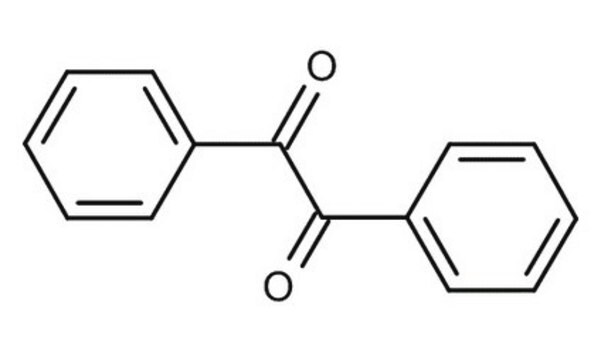Wichtige Dokumente
W312908
Biphenyl
≥99%
About This Item
Empfohlene Produkte
Biologische Quelle
synthetic
Qualitätsniveau
Agentur
meets purity specifications of JECFA
Dampfdichte
5.31 (vs air)
Dampfdruck
9.46 mmHg ( 115 °C)
Assay
≥99%
Form
flakes
powder or crystals
Selbstzündungstemp.
1004 °F
Expl.-Gr.
0.6 %, 111 °F
5.8 %, 166 °F
bp
255 °C (lit.)
mp (Schmelzpunkt)
68-70 °C (lit.)
Anwendung(en)
flavors and fragrances
Dokumentation
see Safety & Documentation for available documents
Nahrungsmittelallergen
no known allergens
Organoleptisch
geranium; green
SMILES String
c1ccc(cc1)-c2ccccc2
InChI
1S/C12H10/c1-3-7-11(8-4-1)12-9-5-2-6-10-12/h1-10H
InChIKey
ZUOUZKKEUPVFJK-UHFFFAOYSA-N
Angaben zum Gen
human ... CYP1A2(1544) , ESR1(2099)
Suchen Sie nach ähnlichen Produkten? Aufrufen Leitfaden zum Produktvergleich
Allgemeine Beschreibung
Haftungsausschluss
Signalwort
Warning
H-Sätze
Gefahreneinstufungen
Aquatic Acute 1 - Aquatic Chronic 1 - Eye Irrit. 2 - Skin Irrit. 2 - STOT SE 3
Zielorgane
Respiratory system
Lagerklassenschlüssel
11 - Combustible Solids
WGK
WGK 2
Flammpunkt (°F)
230.0 °F - closed cup
Flammpunkt (°C)
110 °C - closed cup
Persönliche Schutzausrüstung
dust mask type N95 (US), Eyeshields, Gloves
Hier finden Sie alle aktuellen Versionen:
Besitzen Sie dieses Produkt bereits?
In der Dokumentenbibliothek finden Sie die Dokumentation zu den Produkten, die Sie kürzlich erworben haben.
Kunden haben sich ebenfalls angesehen
Unser Team von Wissenschaftlern verfügt über Erfahrung in allen Forschungsbereichen einschließlich Life Science, Materialwissenschaften, chemischer Synthese, Chromatographie, Analytik und vielen mehr..
Setzen Sie sich mit dem technischen Dienst in Verbindung.











